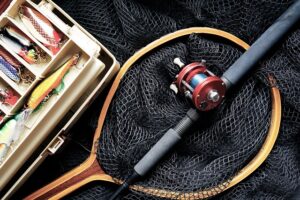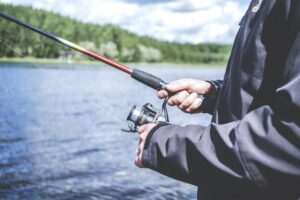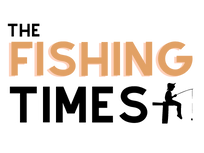Fishing is one of the oldest and most widely practiced professions in the world, providing sustenance and livelihoods to millions of people worldwide. However, as global demand for fish continues to rise, commercial fishing practices have become increasingly unsustainable, leading to the depletion of fish populations and the destruction of marine habitats. One solution to this problem is the use of eco-friendly fishing gear. In this article, we will explore the benefits of using eco-friendly fishing gear and how it can help to protect our oceans and sustainably manage fish populations.
Eco-friendly fishing gear refers to equipment and techniques that minimize the negative impact on the environment and reduce the amount of bycatch, which is the accidental capture of non-target species. Eco-friendly fishing gear includes methods such as using traps, pots, and lines, as opposed to large nets or trawls, which can result in the capture of large amounts of non-targeted marine life. Additionally, eco-friendly fishing gear is made from sustainable materials, such as bamboo, recycled plastic, and biodegradable materials, to reduce the amount of plastic waste in the ocean.

Benefits
One of the primary benefits of using eco-friendly fishing gear is the reduction of bycatch. Bycatch is a significant issue in commercial fishing, and it can have a devastating impact on marine ecosystems. Non-targeted species, including endangered animals such as sea turtles, dolphins, and sharks, are often caught in large numbers in nets and trawls. By using eco-friendly fishing gear, fishermen can selectively target specific species and avoid the unintentional capture of non-targeted marine life, reducing the impact on the ecosystem.
Another significant benefit of using eco-friendly fishing gear is the conservation of fish populations. Many commercial fishing practices result in the depletion of fish populations, leading to overfishing and the collapse of marine ecosystems. By using eco-friendly fishing gear, fishermen can sustainably manage fish populations and ensure that they are not harvesting more fish than can be replenished. This helps to protect the long-term health of fish populations and maintain a healthy balance within the marine ecosystem.
Using eco-friendly fishing gear can also have economic benefits. Sustainable fishing practices can provide a stable income for fishermen and their families. By using selective gear, fishermen can target specific species, resulting in higher-quality catches that can fetch higher prices at market. Additionally, by avoiding the capture of non-targeted species, fishermen can avoid fines and penalties for breaking fishing regulations, which can be costly and harmful to their livelihoods.
Another important benefit of using eco-friendly fishing gear is the protection of marine habitats. Traditional fishing methods, such as trawling, can damage sensitive habitats such as coral reefs and seagrass beds, leading to the destruction of essential marine ecosystems. By using eco-friendly fishing gear, fishermen can avoid damaging these habitats and ensure that they remain healthy and productive for future generations.
Finally, using eco-friendly fishing gear can help to reduce the amount of plastic waste in the ocean. Traditional fishing gear is often made from plastic materials that can take hundreds of years to break down, resulting in the accumulation of plastic waste in the ocean. Eco-friendly fishing gear is made from sustainable materials that can biodegrade, reducing the amount of plastic waste in the ocean and protecting marine life from the harmful effects of plastic pollution.
There are several initiatives and regulations in place to promote the use of eco-friendly fishing gear. Many countries have introduced laws and regulations that require fishermen to use eco-friendly fishing gear, such as selective fishing methods and biodegradable materials. Some organizations also offer financial incentives to encourage the use of sustainable fishing practices, such as subsidies for fishermen who use eco-friendly fishing gear or certification programs that promote sustainable fishing practices.

However, it is important to note that the use of eco-friendly fishing gear is not a panacea for all of the problems associated with commercial fishing. Sustainable fishing practices must be combined with effective fisheries management and conservation strategies to ensure the long-term health of our oceans. For example, measures such as implementing marine protected areas and limiting fishing quotas can help to maintain healthy fish populations and protect vulnerable marine habitats.
Moreover, consumers can also play a role in promoting sustainable fishing practices by choosing to purchase sustainably caught seafood products. Many organizations provide information on the sustainability of different seafood products, and consumers can use this information to make informed choices about their seafood consumption. By choosing sustainably caught seafood, consumers can help to support sustainable fishing practices and encourage the use of eco-friendly fishing gear.
One of the challenges of promoting the use of eco-friendly fishing gear is the cost associated with transitioning to sustainable fishing practices. Eco-friendly fishing gear can often be more expensive than traditional gear, and this cost can be a significant barrier for small-scale fishermen and fishing communities. Moreover, the lack of access to funding and technical support can also limit the adoption of sustainable fishing practices.
To address these challenges, several initiatives have been established to provide financial support and technical assistance to fishermen and fishing communities transitioning to sustainable fishing practices. For example, the Marine Stewardship Council offers certification programs that promote sustainable fishing practices and provide financial incentives to fishermen who meet the sustainability standards. Additionally, the United Nations Food and Agriculture Organization has launched several initiatives to promote sustainable fishing practices and provide technical assistance to small-scale fishermen and fishing communities.
Another challenge is the lack of awareness and education about the benefits of eco-friendly fishing gear. Many fishermen and consumers may not be aware of the negative impact of traditional fishing practices on the environment and the benefits of using eco-friendly fishing gear. Education and awareness-raising campaigns can play a crucial role in promoting the use of sustainable fishing practices and encouraging consumers to choose sustainably caught seafood.
Conclusion
In conclusion, the use of eco-friendly fishing gear is a crucial step towards promoting sustainable fishing practices and protecting our oceans. By reducing bycatch, sustaining fish populations, protecting marine habitats, and reducing plastic waste, eco-friendly fishing gear can help to ensure the long-term health of our marine ecosystems. However, promoting the use of eco-friendly fishing gear requires a coordinated effort from governments, fishing communities, and consumers to provide financial support, technical assistance, and education and awareness-raising campaigns. Only by working together can we ensure that our oceans remain healthy and productive for generations to come.










